Using Moving Heads in Outdoor and Festival Settings
- Outdoor Festival Lighting Fundamentals with moving head dj lights
- Why choose moving head dj lights for outdoor festivals?
- Weatherproofing and IP ratings for moving head dj lights
- Power, consumption, and thermal management for moving head dj lights
- Rigging, mounting, and safety best practices for moving head dj lights
- Control, networking, and synchronization for moving head dj lights
- Selecting beam types: moving head dj lights for zones and creative objectives
- Programming techniques and festival show design for moving head dj lights
- Cost, maintenance, and lifecycle considerations for moving head dj lights
- LQE — Manufacturer profile and how their moving head dj lights support outdoor events
- Quick comparison: fixture categories for outdoor festival planners (moving head dj lights)
- Final checklist before show day for moving head dj lights
- FAQ — Common questions about moving head dj lights for outdoor festivals
- References
Outdoor Festival Lighting Fundamentals with moving head dj lights
Festivals and outdoor events demand lighting solutions that combine high output, creative flexibility, and robustness. Moving head dj lights are a staple for modern live events because they offer dynamic beams, color control, gobos, and rapid repositioning—features that allow lighting designers to sculpt large outdoor spaces and make moments pop. This article provides a practical playbook—from selecting weatherproof fixtures to power, rigging, and control strategies—so production managers, rental houses, and festival technical teams can deploy moving heads reliably and cost-effectively.
Why choose moving head dj lights for outdoor festivals?
Moving head dj lights deliver versatility that static fixtures cannot match. Key advantages include: immediate repositioning for stage-to-crowd effects, interchangeable optics (wash, beam, profile), powerful zoom ranges that adapt to distance, and integrated effects (prism, gobo, frost) that reduce the need for multiple fixture types. For festivals, that means fewer fixtures to transport and rig, faster programming, and greater creative impact on big-air and open-field sites where long throw and high beam intensity are needed.
Weatherproofing and IP ratings for moving head dj lights
Outdoor readiness is not binary—there are degrees of protection. Use fixtures with the right IP rating for the environment:
| Environment | Recommended IP Rating | Why |
|---|---|---|
| Covered stages / short-term fine weather | IP20–IP44 | Basic dust and splash protection; acceptable when fixtures are under cover and weather is mild |
| Exposed outdoor stages with occasional rain | IP44–IP54 | Protection against water splashes and limited dust ingress; suitable with additional rain covers |
| Open-field festivals / heavy weather risk | IP65+ | Complete dust protection and protection against low-pressure water jets—recommended for long-running outdoor events |
Source: IP code definitions and guidelines (see references). Even with IP65 fixtures, designers must consider cable entry points, connectors, and local drainage to avoid water pooling around control and power distribution nodes.
Power, consumption, and thermal management for moving head dj lights
Festival sites often face limited feeder capacity and long cable runs. When planning power for moving head dj lights, consider:
- Fixture power draw (typical moving heads range from 300W for compact wash heads to 1500W+ for high-output profile/spot/beam heads).
- Inrush current and breaker selection—LED-based moving heads have lower running watts but can present inrush; specify slow-blow breakers or use soft-start distribution where possible.
- Cooling strategy—outdoor heat can reduce LED efficacy; avoid overdriving fixtures in high ambient temperatures and allow free airflow around housings.
Practical tip: Calculate total running load, then add 20–30% headroom for inrush, effects, and additional ancillary gear (video walls, audio racks). For multi-day festivals, favor LED fixtures with high efficacy (lm/W) to reduce fuel costs for generators and lower cumulative heat loads (U.S. Department of Energy: solid-state lighting guidance).
Rigging, mounting, and safety best practices for moving head dj lights
Proper rigging is non-negotiable for outdoor events. Key considerations for mounting moving head dj lights safely:
- Follow industry guides such as The Purple Guide and Event Safety Alliance for load calculations, access, and trained riggers.
- Use dual safety cables, rated clamps, and spread load across trusses. Treat each fixture as a dynamic load—moving heads change torque on the truss when moving quickly.
- Use weather-rated cabling and connectors (IP-rated power connectors and sealed DMX/ethernet housings). Keep signal splitters in weatherproof enclosures.
- Plan physical access for maintenance and secure fixtures from tampering or accidental impact in public-access zones.
Checklist: structural engineer sign-off for large trusses, ground anchors for towers, lightning risk assessment, and clear emergency procedures. These are standard requirements for festival insurance endorsements.
Control, networking, and synchronization for moving head dj lights
Industry-standard control protocols for moving head dj lights include DMX512, Art-Net, and sACN. For festivals with large fixture counts, use Ethernet-based protocols (Art-Net/sACN) and managed switches to distribute universes and reduce single-point failures.
- Network segmentation: separate control networks from administrative networks and stage Wi-Fi. Use VLANs and unmanaged switches only for small rigs; prefer managed switches for larger deployments.
- Addressing strategy: maintain a fixture map and reserve spare DMX channels/addresses for maintenance swaps. Label trunks and use sticky labels on connectors.
- Timecode and show sync: for timed effects or pyrotechnics, synchronize via SMPTE or reliable NTP-synced consoles with redundant paths.
Common failure modes are broken RJ45/DMX cables, connector corrosion, and network configuration errors. Prevent these with weatherproof connectors, continuity checks before doors open, and redundant feeds for critical fixtures.
Selecting beam types: moving head dj lights for zones and creative objectives
Moving head fixtures are often categorized as wash, beam, profile (spot), and hybrid. Each has a role at festivals:
| Type | Typical Use | Typical Power/Output Range | Advantages |
|---|---|---|---|
| Wash moving head dj lights | Front stage, audience washes, color blending | 200W–900W (LED engines), variable lumens | Soft edges, wide coverage, fast color mixing |
| Beam moving head dj lights | Sky beams, aerial effects, long-throw accents | 300W–1500W, narrow beam angles | High-intensity shafts, long throw, strong aerial presence |
| Profile/Spot moving head dj lights | Key light, spotlighting, gobos and texture projection | 300W–1200W | Sharp beams, focusable, shutter and iris control |
| Hybrid moving head dj lights | Flexible deployment where wash and beam required | 400W–1400W | Multipurpose, reduces inventory of distinct fixtures |
Choosing the right mix depends on stage size, sightlines, and the festival's visual language. For open-air main stages, prioritize beam and hybrid units for long throw and aerial visibility; reserve wash and profiles for performer illumination and front truss positions.
Programming techniques and festival show design for moving head dj lights
Programming moving head dj lights for large outdoor stages requires thoughtful cues, economy of movement, and fail-safe fallback states. Practical programming tips:
- Design cues with fete-wide visibility—use big, slow moves for crowd-facing moments and fast stabs for drops.
- Group fixtures logically (e.g., left/right, roof/front truss) and create macros for synchronized effects to reduce console complexity during changeovers.
- Use color palettes and gobo families consistent with the artist’s branding to maintain visual continuity between acts.
- Have a house preset that puts fixtures into safe, low-power positions for stage dark periods and emergencies.
Also plan for changeovers: saving and recalling fixture patches and test fixtures in an easy-to-use layout helps stage crews swap rigs between acts quickly without re-addressing each unit.
Cost, maintenance, and lifecycle considerations for moving head dj lights
Total cost of ownership includes initial purchase/rental cost, lamp or LED engine life, maintenance, and downtime risk. LED moving head dj lights typically offer longer service intervals than discharge lamp fixtures, with LED modules often rated at 30,000–50,000 hours. For rental companies and festivals:
- Document maintenance logs, firmware versions, and repair history for each fixture.
- Keep replacement parts (fans, lenses, gobos, quick-disconnect connectors) on-hand for rapid field repairs.
- Consider the warranty, the manufacturer’s RMA process, and local service support when selecting brands for large-scale deployment.
LQE — Manufacturer profile and how their moving head dj lights support outdoor events
LQE was founded in 2008 and is headquartered in Foshan, China. We are a professional OEM/ODM stage lighting equipment manufacturer specializing in the R&D, production, and sales of middle- and high-end digital stage lighting. Our production base covers an area of about 10,000 square meters, has the ability to produce 100,000 lighting fixtures annually, and has 80 national patents.
Our range of stage lighting equipment is diverse, including various moving head lights and static lights, suitable for applications in theaters, music concert stages, studios, broadcasting, religious spaces, exhibitions, nightclubs, leisure venues, theme parks, and more.
We are committed to providing first-class modern stage lighting equipment and exceptional customer service, all while maintaining the best value and cost-effectiveness in the industry. Our goal is to deliver high-quality, long-lasting lighting solutions that help stage designers and producers realize their vision.
Our vision is to become the world's leading manufacturer of LED stage lighting.
Why consider LQE moving head dj lights for festivals:
- Waterproof stage lighting and IP-rated product lines designed specifically for outdoor use.
- Broad portfolio including beam moving head light, moving head hybrid light, moving head wash light, moving head profile light, LED effect light, LED studio light, LED par light, and lighting accessories.
- High-production capacity and 80 national patents indicate strong R&D and supply chain capabilities—helpful for large festival orders and OEM customization.
- Competitive cost-to-performance ratio for rental companies and event producers seeking durable, mid-to-high-end fixtures.
Quick comparison: fixture categories for outdoor festival planners (moving head dj lights)
| Decision Factor | Wash | Beam | Profile/Spot | Hybrid |
|---|---|---|---|---|
| Primary Role | Color blending & coverage | Aerial impact & sky beams | Key lighting & gobos | All-in-one versatility |
| Transport & Setup Complexity | Low–Medium | Medium–High | Medium | Medium (less inventory) |
| Best for Outdoor Main Stages | Support | Feature | Support/Portrait | Flexible |
Final checklist before show day for moving head dj lights
Use this pre-show checklist to avoid common outdoor pitfalls:
- Confirm IP ratings for all fixtures and ensure all connectors are weather-sealed.
- Verify power distro sizing with headroom for inrush; test under load when possible.
- Run a full network test of DMX/Art-Net/sACN universes and verify redundancy paths.
- Do a safety check on rigging, dual safeties, and emergency access paths.
- Have spare fixtures, a parts kit, and a documented swap procedure for quick field repairs.
FAQ — Common questions about moving head dj lights for outdoor festivals
- Q: What IP rating do I really need for festival moving head dj lights?
A: For exposed outdoor festivals where rain and dust are likely, IP65 is the safe baseline. For covered stages in predictable weather, IP44 may be acceptable. Always account for connectors and distro—sealed cabling and enclosures are essential (see IP Code reference). - Q: Can I use indoor moving head dj lights outdoors if I add rain covers?
A: Temporary covers can work for short exposures, but they often restrict airflow and add heat risk. For multi-day or heavy-duty use, choose purpose-built outdoor or IP-rated fixtures. - Q: How should I manage DMX addressing for large moving head dj lights rigs?
A: Use an addressing map, reserve spare channels, and favour Art-Net/sACN over long DMX runs. Implement redundancy and label cable runs clearly to speed troubleshooting. - Q: How much power should I budget per moving head dj lights fixture?
A: Compact LED washes might draw 200–400W, whereas high-output beam/profile fixtures can be 800–1500W. Always calculate total running load and add 20–30% for inrush and ancillary systems. - Q: Are hybrid moving head dj lights a good choice to reduce inventory?
A: Yes—hybrids offer flexibility and can reduce the number of fixture types you need to transport. They may, however, cost more per unit and could be heavier or more complex to maintain. - Q: What maintenance do moving head dj lights need between festival shows?
A: Clean optics and fans, verify firmware, check mechanical end-stops, and inspect power and data connectors. Replace worn safety cables and keep a log for each fixture.
Contact / Product CTA: For festival-grade moving head dj lights including waterproof stage lighting, beam moving head light, moving head hybrid light, moving head wash light, and moving head profile light, contact LQE for catalogs, technical datasheets, OEM/ODM inquiries, and sample requests. Our production capacity and R&D capability mean we can support single-event rentals through full festival fleets—reach out for a tailored proposal and factory tour.
References
- IP Code (Ingress Protection) — Wikipedia. https://en.wikipedia.org/wiki/IP_Code (Accessed 2025-11-21)
- Solid-State Lighting — U.S. Department of Energy. https://www.energy.gov/eere/ssl/solid-state-lighting (Accessed 2025-11-21)
- The Purple Guide (Event Safety Guide). https://www.thepurpleguide.co.uk/ (Accessed 2025-11-21)
- Event Safety Alliance. https://www.eventsafetyalliance.org/ (Accessed 2025-11-21)
- DMX512 protocol — Wikipedia. https://en.wikipedia.org/wiki/DMX512 (Accessed 2025-11-21)
- Art-Net — Wikipedia. https://en.wikipedia.org/wiki/Art-Net (Accessed 2025-11-21)
The rgb par can lights Cost Guide | LQE Ultimate Insights
The B2B Buyer’s Guide to stage lighting | LQE Ultimate Insights
How to Choose the concert stage lights manufacturer and supplier in us?
Why choose LQE as your led stage lights supplier
Distributor
Is there a minimum order quantity (MOQ) to become a distributor?
MOQ requirements vary based on the product line and market region. However, for long-term distribution partnerships, we are flexible and can start with a trial order to build trust.
What are the advantages of becoming an LQE distributor?
Access to high-performance, patented lighting products
Competitive factory pricing and excellent profit margin potential
Strong R&D capabilities with 80+ national patents
Reliable production capacity: 100,000 units annually
Dedicated account manager to support your growth
What types of companies can become LQE distributors?
We welcome partnerships with companies that have experience in the entertainment, AV, lighting, or stage equipment industries. Whether you are a local reseller, importer, system integrator, or project contractor, we are open to exploring win-win cooperation.
1000w
What Is the Warranty Offered by LQE Lighting?
LQE lighting offers a comprehensive 1-year warranty and spare parts on its products, giving customers peace of mind and investment protection.
Do You Supply After-Sale Service?
LQE lighting offers 7x24 hrs systematic SOP customer support with dedicated personnel, ensuring quick and comprehensive assistance for stage lighting needs.
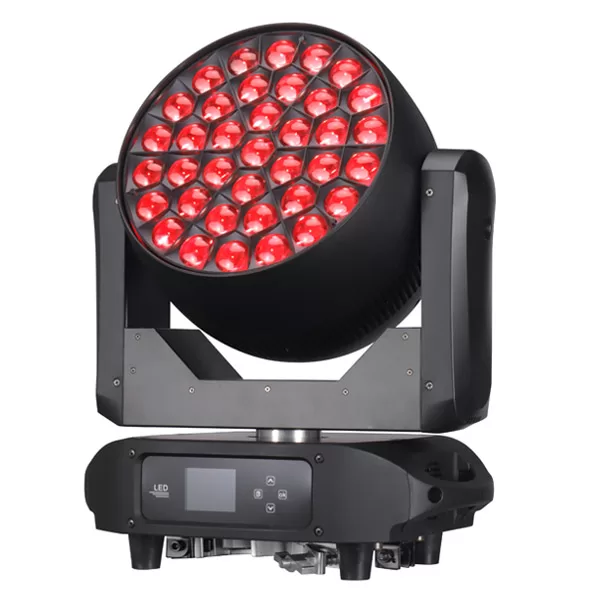
800w 37x40w RGBW Stage Moving Head Wash Light LW800
800W 37x40W LED RGBW Mulichips Moving Head Wash Lights with Zoom (5°-50°), Covering Large Range and Long Distance. Designed to deliver a 5°–50° ultra-large zoom range to achieve a greater wash effect, illuminating stages and events with stunning ring control lighting effects.

LED Moving Head Stage Wash Light LW200Z
The versatile moving head stage light provides a powerful lighting solution for theaters, concerts, and large outdoor performances. Suitable for theaters, TV stations, entertainment stages, and large outdoor performance scenes.

600w 19x40w RGBW Stage Moving Head Wash Light LW600 Zoom IP20
600W 19x40W LED RGBW Mulichips Moving Head Wash Lights with Zoom (5°–50°), Covering Large Range and Long Distance. IP20: Designed to deliver a 5°–50° ultra-large zoom range to achieve a greater wash effect, illuminating stages and events with stunning ring control lighting effects.
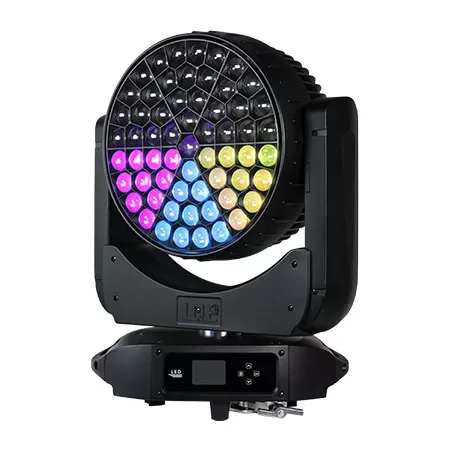
1000w 61x40w RGBW Stage Moving Head Wash Light LW1000
1000W 61x40W LED RGBW Mulichips Moving Head Wash Lights with Zoom (5°–50°), Covering Large Range and Long Distance. Designed to deliver a 5°–50° ultra-large zoom range to achieve a greater wash effect, illuminating stages and events with stunning lighting effects.

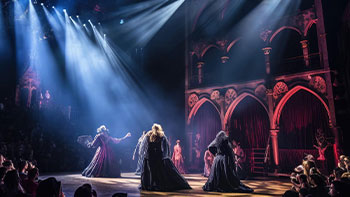
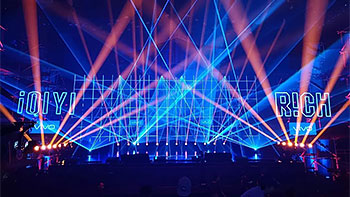

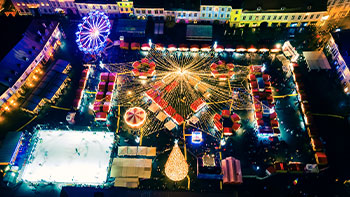








Linkedin
YouTube
Whatsapp: +8618924548390
TikTok